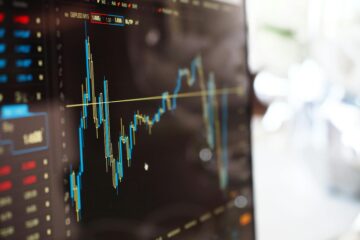Actavis plc.; market cap (as of 21/11/2014): $70.5bn
Allergan Inc.; market cap (as of 21/11/2014): $63.3bn
Introduction
The growing emphasis we put on health and quality of life, and the scientific advancements which are making this possible, are putting the pharmaceutical and medical industries in the spotlight. The recent surge in M&A activity in this sector, with deal volumes reaching over $260bn at the end of the fourth quarter of 2014 reflects companies’ efforts to remain competitive by building strengths through external growth opportunities. Many of this year’s transactions between established firms, such as Zimmer’s agreed $13.4bn acquisition of Biomet, are intended not only to create more specialized companies, but also to form market leaders. Popular acquisitions of biotechnology startups have allowed big industry players to obtain the know-how for risky internal development while other significant deals have been fueled by the prospect of reducing corporate tax, such as Medtronic’s $43 billion acquisition of Covidien. Takeovers have also been driven by the idea of cutting R&D costs and focusing on higher margins which has defined the rise of Canadian drugs giant Valeant. In its most recent pursuit of American Botox-maker Allergan, Valeant teamed up with activist investor Bill Ackman in a highly contested six month battle. It was however Actavis, a Dublin-based pharmaceutical company, who on the November 17 announced that it had reached a definitive agreement to acquire Allergan.
Valued at $66bn, the transaction will give birth to one of the Top 10 Global Growth Pharmaceutical companies with ca. $23bn in pro-forma revenues in 2015. The deal has gained the support of management and the approval of the Boards of Directors of both Actavis and Allergan. After shareholder approval and antitrust clearance in the US and EU the transaction is likely to close in the second quarter of 2015.
Details of the Deal
The bid amounts to $219 per share (based on November 14 close price) and will be executed in both cash and stock: $129.22 in cash and 0.3683 Actavis shares for each share of Allergan common stock. Actavis anticipates that the post-deal financing structure, consisting of a combination of new equity and debt, will support an investment grade rating and provide long-term financing flexibility. Rapid deleveraging is expected within 12 months to below 3.5x Debt to Adjusted EBITDA. Moreover, the combination is expected to generate a strong free cash flow of more than $8bn in 2016 and substantial growth thereafter, which will enable rapid repayment of debt. The combination is deemed to result in a double-digit accretion to non-GAAP EPS within the first 12 months and generate synergies of at least $1.8bn, with a commitment to R&D of approximately $1.7bn.
Actavis – Allergan – Valeant saga
This acquisition is the final step of a long and challenging process that began in April when Canadian-based Valeant Pharmaceuticals teamed up with activist fund manager William Ackman to make a bid for Allergan. Even though the offer promised to generate value for shareholders because of strategic and operational synergies (see below), it was repeatedly rejected by Allergan’s management until the highest bid last May of $180 per share (rumors say it could have been increased up to $200-210). Following the November announcement, Valeant indicated it would not attempt to top Actavis’ offer of $219 per share, as such a move would not be justifiable.
In plain words, the events of the Allergan-Valeant-Actavis saga can be described as a “white knight” takeover defense. Valeant and Ackman proposed a merger plan that highlighted some management decisions which were not value-enhancing for shareholders and said that the NewCo would continue spending on research and development in Phase III programs, but that it would sell or eliminate some of Allergan’s earlier stage programs which have been largely unproductive over the past 16 years. Fearing an overturn, Allergan’s management ran into the arms of the white knight Actavis. Under the announced deal the combined company will be strongly committed to R&D, with annual investment of approximately $1.7bn focused on strategic development of innovative and durable value-enhancing products. However, there is no clear evidence that the Actavis – Allergan (henceforth A-A) tie would generate more synergies than the faded Valeant – Allergan merger (henceforth V-A).
Actavis – Allergan synergies
The A-A strategy is mainly focused on enlarging and diversifying the brand’s pharmaceutical portfolio and expanding commercial opportunities across global markets. With its focus on eye care, neuroscience, medical aesthetics, medical dermatology, breast aesthetics, and urology, Allergan will add to Actavis’ business which is focused principally on women’s health, urology, gastroenterology and dermatology. Brenton L. Saunders, the CEO and President of Actavis, affirmed that the deal would “transform the growth profile” of Actavis’ pharmaceutical business and would “have the ability to generate organic revenue growth at a compound annual growth rate of at least 10% for the foreseeable future”. Together, Allergan and Actavis will have a commercial presence across 100 markets, including an enhanced presence in Canada, Europe, Southeast Asia and Latin America and a strong footprint in China and India. The combined company will benefit from Allergan’s global brand equity, industry-leading consumer marketing capabilities and strong consumer awareness tied to its key products, including Botox.
Valeant – Allergan synergies
On the other hand, the V-A strategy would have been more focused on cost synergies (estimated at $2.7bn annually) and the face treatment “monopoly”, given the companies’ highly complementary portfolios. In fact, the combination would have given birth to an unrivaled portfolio in Ophthalmology, Dermatology, and Aesthetics. Ackman claimed that “the combination of Valeant and Allergan represents the most strategic and value-creating transaction” he had ever analyzed. Yet, Allergan did not appreciate the R&D reshaping proposal, a key point of the cost cutting synergies.
Winners and Losers?
Considering the immediate consequences of the deal, Actavis’ acquisition of Allergan is a win-win for all the participants in the process. Actavis won the “battle” but it will come down to time and managerial effort to see whether the premium paid justifies value creation through future synergies. Allergan shareholders will receive a substantial premium (Allergan’s price per share on April 10, before rumors of the first bid, amounted to ca. $116) and may participate in the upside potential of the NewCo with the stock portion of the compensation. Plus, the management feels safer in the hands of Actavis, the “white knight” that will keep Allergan’s R&D running (NewCo’s CEO will be the current Actavis CEO, Mr. Saunders).
On the other hand, the “losers” of the hostile takeover, Mr. Ackman and Montreal-based Valeant, are not losers at all. Considering that Mr. Ackman owns a 9.7% stake in Allergan, he stands to make a substantial return on his investment (Exhibit 1). In addition, Valeant and Ackman’s Pershing Square have an agreement whereby Valeant gets 15% of profits from the deal. Valeant’s strategy of acquiring pharmaceutical companies, stripping their research budgets and squeezing profits out of them is not straightforward and earning more than $400m while threatening to do just that without actually having to do it, sounds far better.
(Exhibit 1)
|
Pershing Square |
Valeant |
|
| Allergan shares owned |
28.307.029,00 |
591.509,00 |
| Average cost ($) |
129,30 |
128,32 |
| Total cost ($) |
3.660.098.849,70 |
75.902.434,88 |
| Deal price per share ($) |
219,00 |
219,00 |
| Total value ($) |
6.199.239.351,00 |
129.540.471,00 |
| 15% profit share ($) |
-380.871.075,20 |
380.871.075,20 |
| Total dividends ($) |
4.246.054,00 |
88.726,00 |
| Net profit ($) |
2.162.515.480,10 |
434.597.837,32 |
Final considerations
This deal becomes extremely interesting if we consider the interplay between Valeant and the activist hedge fund Pershing Square lead by Mr. Ackman. The two acted in a perfectly coordinated manner and their interplay approximates the concept of corporate raiders. Valeant acted as a hostile strategic buyer but without putting capital at risk and without engaging in a proxy fight which were carried out by Ackman; on the other hand, Pershing Square did not act as a hostile acquirer but happened to be a gentle activist investor interested in maximizing shareholders’ value. This combined approach, incites fewer conflicts than the classical raider given the alignment of goals between the activist investor and the other target shareholders. However, the approach is not extremely transparent: Allergan filed an insider trading lawsuit against Valeant and Pershing Square claiming that the pair had taken advantage of Allergan’s public shareholders, buying from them at depressed prices before announcing the takeover offer.
Financial advisors
J.P. Morgan is serving as the exclusive financial advisor to Actavis and will provide bridge facilities for the transaction. Goldman Sachs and BofA Merrill Lynch are serving as financial advisors to Allergan.
[edmc id=2182]Download as PDF[/edmc]



0 Comments